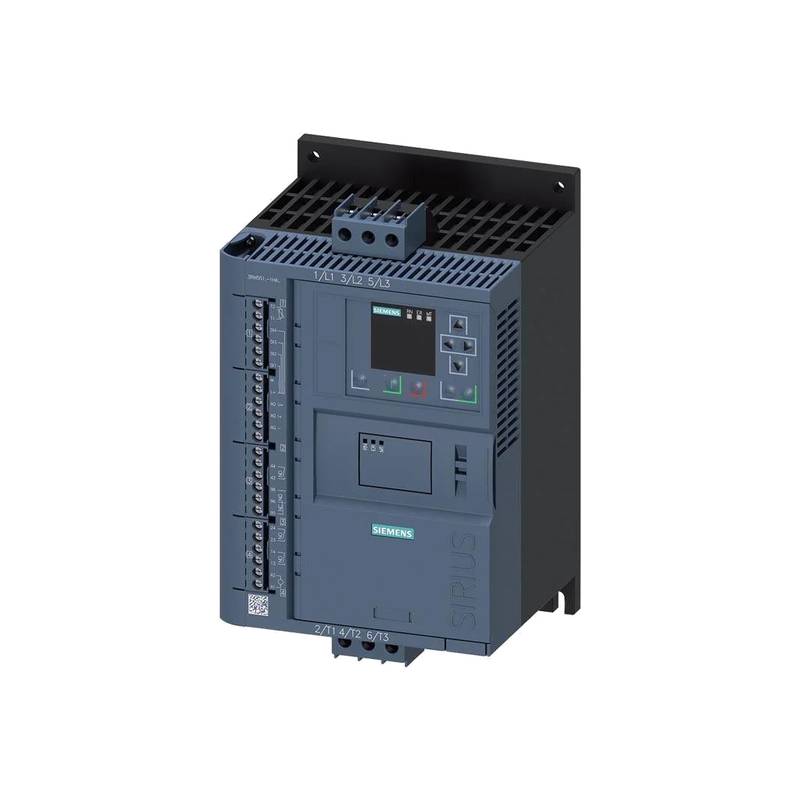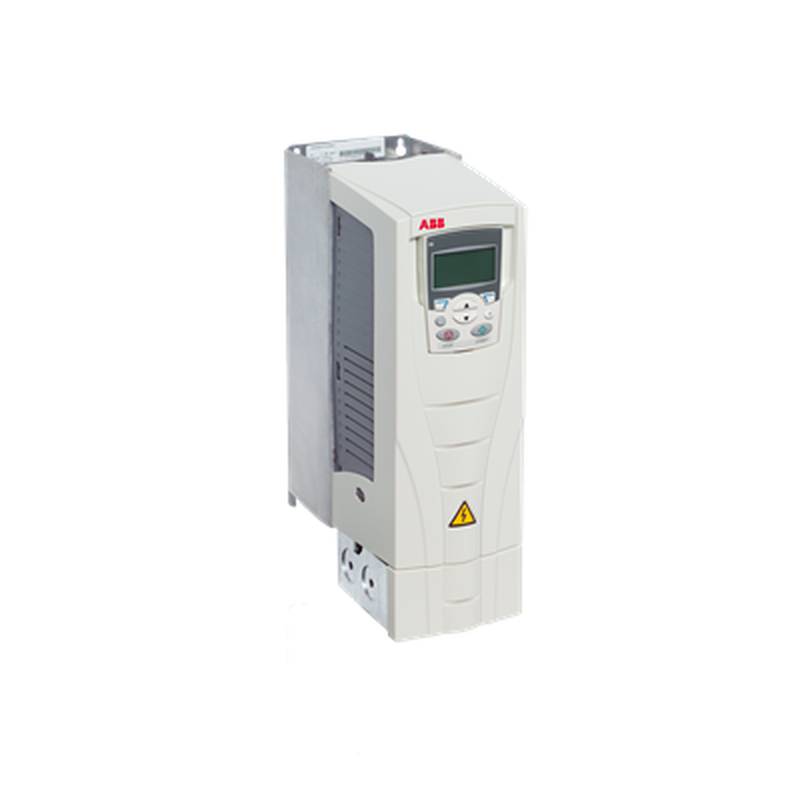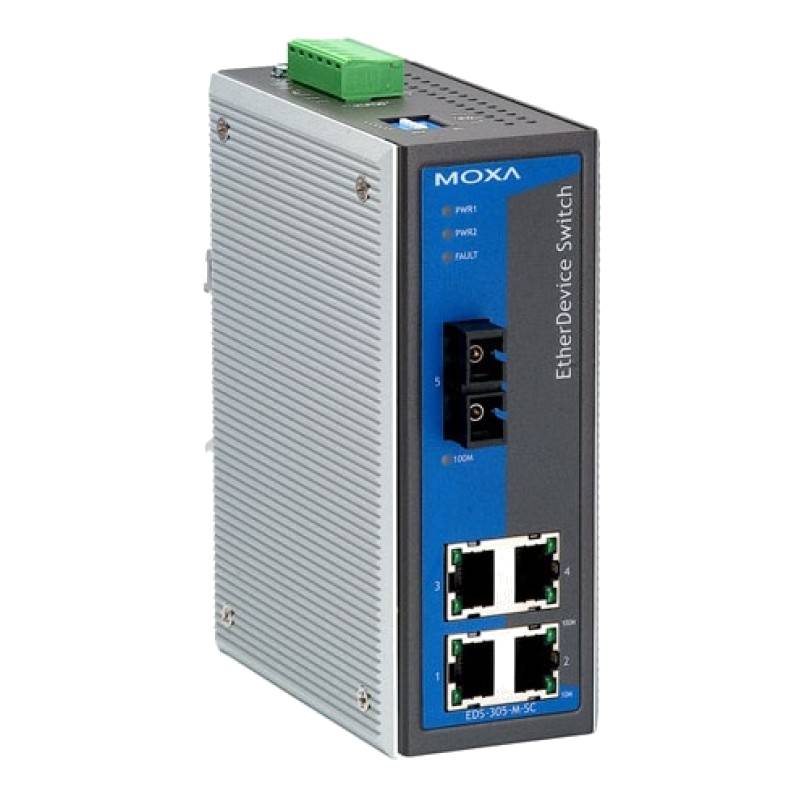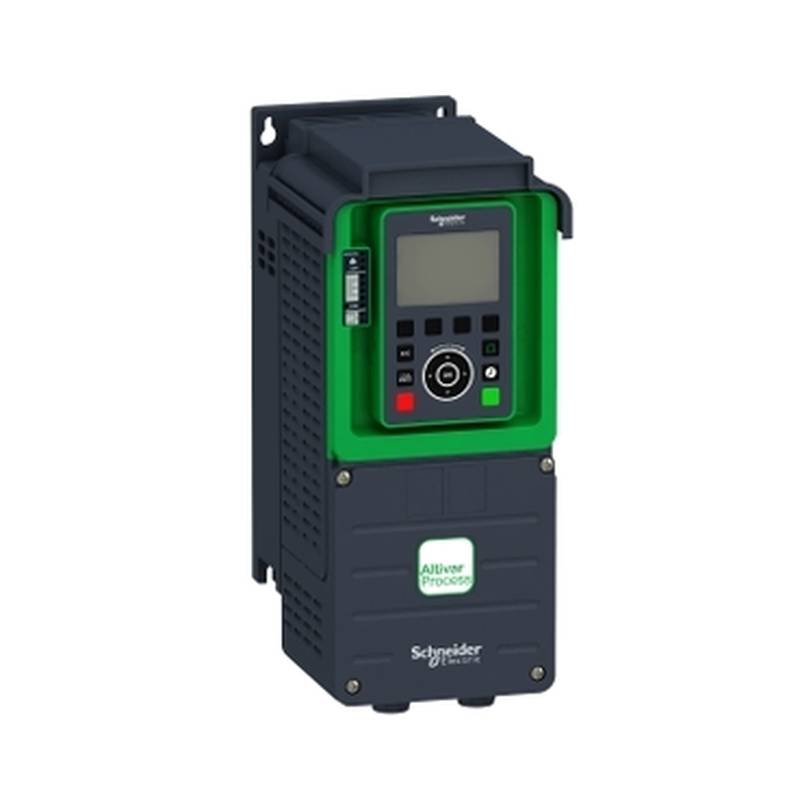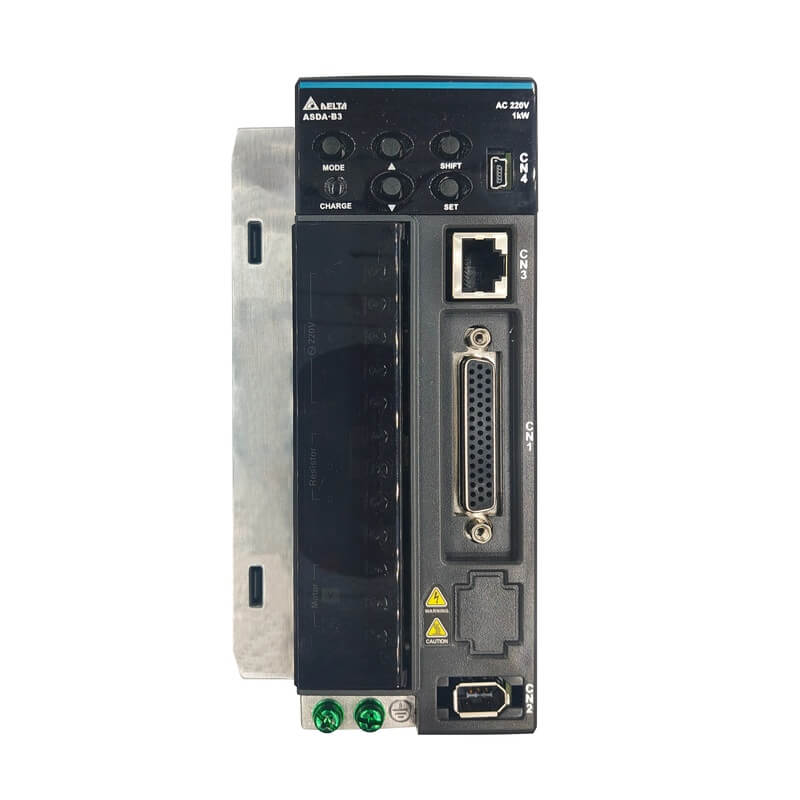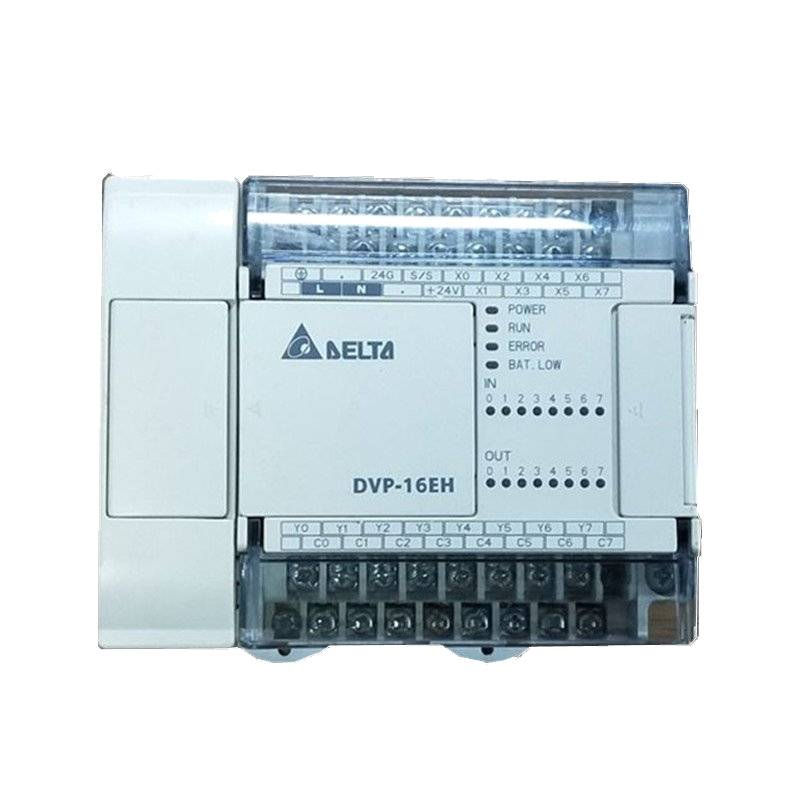
The Siemens 3RW5514-1HA14 Standard Soft Start Controller is a robust and efficient solution for motor control, offering seamless acceleration and deceleration for industrial applications. This 18A, 7.5kW unit excels in reducing mechanical stress on machinery, minimizing electrical inrush currents, and improving overall system reliability. Its compact design and integrated bypass functionality enhance energy efficiency and simplify installation.
Product Specifications
| Parameter | Value |
| :--------------------------- | :---------------------------------- |
| Manufacturer | Siemens |
| Product Series | Sirius 3RW55 Standard |
| Model Number | 3RW5514-1HA14 |
| Rated Operational Current | 18 A |
| Rated Motor Power (at 400V) | 7.5 kW |
| Supply Voltage | 200-480 V AC |
| Control Voltage | 24 V DC |
| Starting Method | Soft Start |
| Number of Phases | 3-Phase |
| Bypass | Integrated |
| Communication Interfaces | Modbus RTU (optional) |
| Protection Features | Motor overload, phase failure |
| Dimensions (H x W x D) | 245 x 140 x 200 mm |
| Ambient Temperature Range | -25°C to +60°C |
Core Features & Market Positioning
The Siemens 3RW5514-1HA14 stands out in the industrial automation landscape due to its advanced semiconductor-based soft start technology. This approach ensures exceptionally smooth motor ramp-up and ramp-down, significantly extending the lifespan of mechanical components like gearboxes, belts, and couplings by mitigating the shock loads associated with direct-on-line (DOL) starting. Its integrated bypass contactor is a key differentiator, reducing energy losses during motor run-up and full-speed operation, thereby enhancing overall system efficiency and reducing operational costs. Furthermore, the 3RW55 series boasts a simplified parameterization, allowing for quicker commissioning and reduced setup time in demanding industrial environments. This combination of smooth motor control, energy savings, and ease of use positions the 3RW5514-1HA14 as a premium, yet cost-effective, choice for applications where reliability and performance are paramount.
Key Application Scenarios
This Siemens soft starter is ideally suited for a wide array of industrial applications where precise motor control is essential. It is frequently deployed in pump systems to prevent water hammer effects and reduce stress on piping, and in conveyor belt systems to ensure gentle load engagement and prevent product damage. Fan applications benefit from reduced mechanical wear and lower noise levels during startup. The 3RW5514-1HA14 is also an excellent choice for compressors, mixers, and crushers, where high starting torques are required but need to be managed to protect both the motor and the driven equipment. Its robust design makes it suitable for demanding environments within manufacturing, water treatment, and mining sectors.
Practical System Integration Guidance
Integrating the Siemens 3RW5514-1HA14 into existing industrial control systems is straightforward. The unit is designed for standard 3-phase motor connections. Wiring involves connecting the main power supply (200-480V AC) to the input terminals and the motor to the output terminals. The 24V DC control voltage supply is connected to its dedicated terminals, facilitating integration with PLC control systems. For enhanced monitoring and diagnostics, an optional Modbus RTU communication module can be fitted, allowing for seamless data exchange with SCADA systems or HMIs. Initial parameter setup, including nominal motor current and ramp time, can be performed directly on the device's keypad or remotely via communication interfaces, ensuring a swift and efficient commissioning process.
Operation and Risk Mitigation
Safe and reliable operation of the Siemens 3RW5514-1HA14 is facilitated by its comprehensive internal protection mechanisms. The controller provides integrated motor overload protection, preventing damage from sustained overcurrent conditions. It also offers phase failure detection, crucial for protecting three-phase motors from damage due to unbalanced power supply. By managing the motor's acceleration and deceleration, the soft starter inherently mitigates risks associated with mechanical shock, reducing the likelihood of equipment failure and unplanned downtime. In the event of a fault, the unit will safely shut down the motor and provide diagnostic information, enabling quick troubleshooting and preventing further system damage. Regular inspection of electrical connections and adherence to local electrical codes are essential for ongoing operational safety.
Scalability & Long-Term Value
The Siemens 3RW5514-1HA14 offers significant long-term value through its integration capabilities and Siemens' commitment to industrial evolution. While a standard soft starter, it can be part of a larger, scalable automation architecture. For more advanced applications requiring dynamic torque control or specific communication protocols beyond Modbus RTU, Siemens offers higher-tier Sirius motor control devices that can seamlessly complement or replace the 3RW55 in a phased upgrade strategy. Its compatibility with various PLC platforms and its ability to connect to IIoT ecosystems via communication gateways ensure that systems utilizing this soft starter can evolve with digital transformation initiatives, providing sustained operational intelligence and potential for predictive maintenance.
---
Frequently Asked Questions
What is the primary function of the Siemens 3RW5514-1HA14?
This device serves as a soft starter for three-phase AC motors. It controls the motor's acceleration and deceleration phases smoothly. This reduces mechanical stress and electrical inrush currents.
Its main goal is to extend equipment lifespan and improve system reliability. It prevents the harsh jolts associated with direct-on-line starts. This ensures smoother operation for connected machinery.
The soft start controller manages power delivery during startup, gradually increasing voltage. This controlled ramp-up protects the motor and driven components from sudden torque shocks.
How does the integrated bypass in the 3RW5514-1HA14 improve efficiency?
The integrated bypass contactor activates once the motor reaches full speed. During normal operation, power bypasses the soft start electronics. This bypass feature significantly reduces energy losses.
By bypassing the semiconductor elements, heat generation is minimized. This leads to lower power consumption during continuous motor run. It also reduces the thermal load on the controller itself.
This efficiency gain translates directly into operational cost savings. It's a key advantage for applications with long run times or high duty cycles.
What are the typical motor sizes compatible with the 3RW5514-1HA14?
This controller is rated for motors up to 7.5 kW at a 400V supply. The maximum operational current it can handle is 18A. It is designed for standard three-phase AC motors.
Users must ensure their motor's nameplate current does not exceed 18A. For 200V or 480V systems, the maximum power rating will vary. Always consult the product manual for precise power ratings at different voltages.
It's crucial to match the soft starter's capacity to the motor's requirements. Undersizing can lead to overheating and failure, while gross oversizing is inefficient.
Can the 3RW5514-1HA14 be used for reversing motor applications?
No, the standard 3RW5514-1HA14 is not designed for motor reversing applications. It exclusively provides forward starting and stopping control. Reversing functionality requires different control logic and hardware.
For applications needing to reverse motor direction, a dedicated reversing contactor arrangement or a variable frequency drive (VFD) would be necessary. This soft starter focuses on smooth start-up and shutdown.
Always verify the application requirements before selecting motor control gear. Ensure the chosen device meets all operational demands, including direction changes if needed.
What type of protection is built into the 3RW5514-1HA14?
This unit features integrated motor overload protection. It monitors the motor's current draw and trips if it exceeds safe limits for extended periods. This prevents motor burnout.
It also includes phase failure detection. If one or more phases of the three-phase supply are lost, the controller will shut down the motor. This protects against severe damage from phase imbalance.
These protective functions enhance operational safety and reliability. They contribute to extending the overall lifespan of the motor and connected equipment.
Is the Siemens 3RW5514-1HA14 suitable for outdoor use without additional protection?
The 3RW5514-1HA14 is designed for industrial environments, typically within control cabinets. While it has an operating temperature range of -25°C to +60°C, it is not inherently rated for direct outdoor exposure.
Direct exposure to rain, dust, or severe weather conditions requires an appropriate enclosure. An IP-rated industrial enclosure is essential to protect the unit from environmental elements.
Always install the soft starter in a location that meets its environmental specifications, often within a control panel, to ensure optimal performance and longevity.
What is the role of the 24V DC control voltage?
The 24V DC control voltage powers the internal logic and control circuits of the soft starter. It is essential for enabling its operation and allowing communication with external control systems.
This separate low-voltage control circuit ensures safety during setup and operation. It allows seamless integration with PLCs and other control devices that commonly use 24V DC signaling.
The 24V DC supply must be stable and properly rated for the controller's requirements. Proper wiring of this circuit is critical for successful commissioning and reliable performance.
Can the Siemens 3RW5514-1HA14 be controlled by a PLC?
Yes, the Siemens 3RW5514-1HA14 is designed for easy integration with Programmable Logic Controllers (PLCs). Its 24V DC control input allows direct connection to PLC digital outputs.
Through its optional Modbus RTU communication interface, advanced control and monitoring are possible. This enables sophisticated integration into automated systems for remote operation and diagnostics.
PLCs can send start, stop, and reset commands. They can also receive status feedback and fault information from the soft starter.
What is the typical ramp-up time that can be set?
The Siemens 3RW5514-1HA14 allows for adjustable ramp-up times. These can typically be set within a range that suits various applications. The exact range is detailed in the product manual.
Users can configure ramp times to manage the acceleration of the motor and connected load. This ensures a smooth transition from zero speed to full speed. Adjustments are made via the device's interface or communication.
Setting an appropriate ramp time is crucial for reducing mechanical stress and power surges. It's a key parameter for optimizing motor start-up performance.
What are the benefits of using a soft starter over a Direct-On-Line (DOL) starter?
Soft starters significantly reduce the high inrush current associated with DOL starting. This lowers peak power demand and can reduce electricity costs. It also lessens electrical stress on the supply network.
They provide a smooth acceleration ramp, minimizing mechanical shock and vibration. This protects motors, gearboxes, belts, and couplings from damage, extending equipment life.
DOL starters offer a simple on/off function but cause abrupt starts. Soft starters offer controlled acceleration, reduced wear, and often energy savings during the start sequence.














